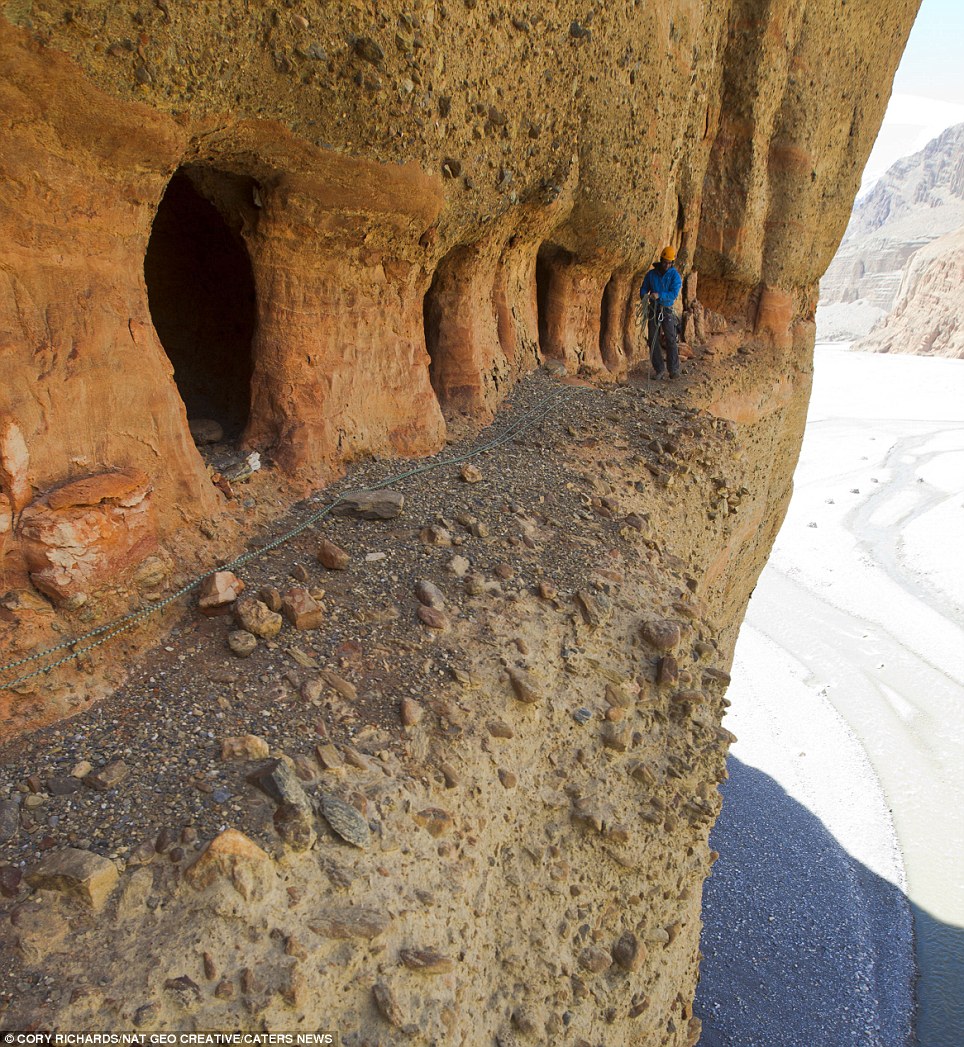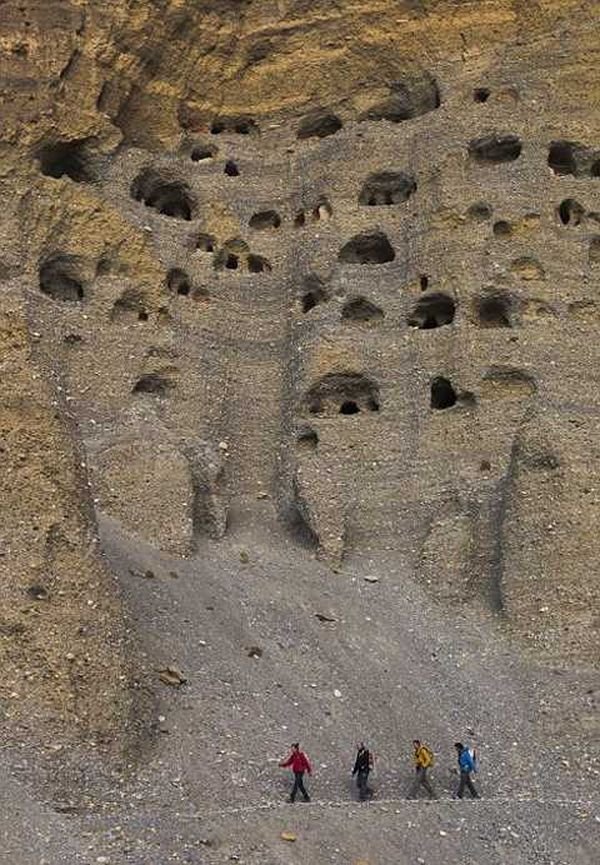Ancient kingdom discovered in Nepal where thousands of caves are carved 155ft off the ground Mystery unrevailed
The Kingdom of Mustang, flanking the Tibetan level, is a standout amongst the most remote and disengaged district of Nepalese Himalaya. Once a free Buddhist kingdom, Bronco was added by Nepal toward the finish of the eighteenth century, however held its status as a different territory until the 1950's the point at which the range was all the more firmly merged into Nepal. In view of its touchy fringe area, Colt was beyond reach to outsiders until 1992. The relative disconnection of the locale from the outside world has helped Colt protect its old culture which is more firmly fixing to Tibet than to Nepal.
The scene is additionally not normal for anything that will be discovered anyplace else in Nepal — profound chasms cut by the Kali Gandaki Stream, and abnormally molded shake developments. The precipices' face are hollowed with an expected 10,000 old give in abodes, some of which are roosted more than 150 feet over the valley floor. Nobody knows who burrowed them, or how individuals even scaled the close vertical shake face to get to them. A portion of the hollows show up practically difficult to reach even to experienced climbers.
An estimated 10,000 of the caves have been found in the former Kingdom of Mustang in North, Central Nepal
They have either been dug into the cliffside or tunnelled from above
Caves are thousands of years old but who built them and why remains a mystery

The greater part of the hollows are currently void, yet others hint at local residence — hearths, grain-stockpiling containers, and resting spaces. A few caverns were evidently utilized as internment chambers. The few dozen bodies that were found in these hollows were all over 2,000 years of age. They lay on wooden quaint little inns with copper adornments and glass dots.
In other caves, skeletons dating from the 3rd to the 8th centuries, before Buddhism came to Mustang, had cut marks on the bones that may have been inflicted during the practice of sky burial, where the body’s flesh is sliced into small pieces and left to be eaten by vultures. Sky burial is still practiced in many remote regions in the Himalaya.
Archeologists believe that the caves in Mustang were used in three general periods. They were first used some 3,000 years ago as burial chambers. Then around 1,000 years ago, they became primarily living quarters, perhaps to escape battles and intruders into the valley. Finally, by the 1400s, most people had moved into traditional villages and the caves became places of meditation. Some of these caves were turned into monasteries such as the Luri Gompa, the Chungsi Cave monastery and the Nyiphuk Cave Monastery, all of which were built around and inside the caves.
Luri Gompa is one of the most famous in Mustang. The monastery is set on a ledge, at least a hundred meter high from the ground, in one of the many natural pillar like sandstone structures. A winding footpath climbs all the way from the bottom of the valley to a single entrance door that leads into two interconnecting chambers. The outer chamber contains a shrine, while the inner chamber —the main treasure of Luri Gompa— is beautifully decorated with a series of paintings depicting Indian Mahasiddhas — saints who were said to have achieved siddhi, or extraordinary powers by meditation. No documentation pertaining to this mysterious gompa or monastery has been found, but the wall paintings appear to be have been made in the 14th century or even earlier.
